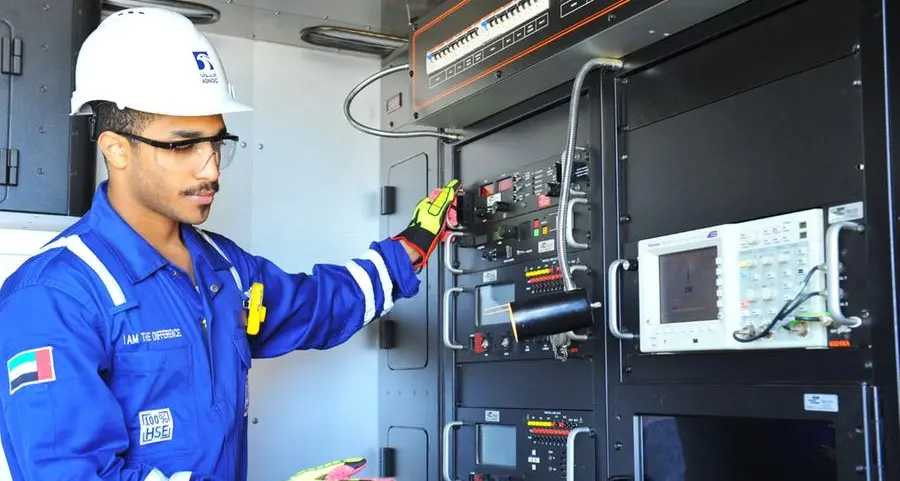Country's breakeven oil price among lowest in world
This is the last part of the annual report for fiscal year 2014-2015 released by the Central Bank of Kuwait. This is the 43rd issue of the series of annual reports prepared and published by the CBK. -- Editor
In the case of Kuwait, a number of mitigating factors, both at the level of macro economy and the banking sector, proffer another reason for optimism.
On the macro front, government's commitment to continue with its development plan is backed by its ability to fund mega projects by using substantial savings the country has accumulated through its fiscal surpluses since 1995. Moreover, Kuwait's gross public debt is quite low (around 7% of its GDP) and banks are awash with liquidity; so the government can conveniently borrow in domestic currency if it chooses not to use its existing financial assets. Moreover, international borrowing would be equally easy to secure, given Kuwait's strong credit rating of Aa2 and its impeccable record of debt servicing even under very difficult circumstances. It is pertinent to mention that the scope of higher borrowing by the government is more of a theoretical proposition; in reality, government has ample financial resources at its disposal though it can opt for some mix of borrowing (e.g. issuing sukuk) and/or utilizing its financial assets.
* Second, Kuwait's breakeven oil price is among the lowest, compared to any other country in within the GCC or elsewhere. According to the IMF's recent estimates for 201526, Kuwait's external breakeven price is the lowest while the fiscal breakeven is very close to that of Qatar (Figure E). Admittedly, if fiscal expenditures continue at their current pace amid lower oil prices, the breakeven price for Kuwait would escalate in future.
* Third, Kuwaiti banks enjoy strong capital adequacy ratios, stable funding and ample liquidity. Nonperforming loans have been at the lowest in recent years and provisions at the highest level, thanks to CBK's proactive measure to countercyclically build an additional cushion for any potential losses (Figure F). Moreover, banks' exposure to the oil sector is almost negligible; so even a slowdown in the oil sector would not affect the banks' credit portfolios. Though household credit constitutes a significant part of banks' overall lending, the portfolio is least infected, with the lowest NPLR among major sectors (see Chapter 2 for details).
These factors collectively underscore the resilience of the banking sector in Kuwait to an oil price shock. In line with the IMF's findings mentioned above, we see limited direct impact of oil prices on banks' performance in the short run. However, if the oil prices remain at current level for an extended period, possibility of some second round effect on the banking sector cannot be overlooked.
Payment and Settlement Systems
Both retail and large scale payment systems in Kuwait have been steadily growing, exhibiting the increasing role of modern payment systems in facilitating a myriad of transactions on a daily basis. With regards to the developments in the retail payments segment, use of ATMs and point of sale (POS) related transactions, when viewed in terms of value of transactions, have witnessed growth of 6.4% and 14.8% respectively during 2014. During the year under review, the share of ATM related transactions was higher (58%) in value while that of POS transactions was higher in terms of volume (60%). To facilitate the increasing use of e-banking, relevant infrastructure has also been growing in Kuwait; during 2014, the number of ATMs and POS machines grew by 10.6% and 20.9%, respectively reaching 1,632 and 38,316 machines by December 2014. This was the strongest growth in e-banking infrastructure during the last six years. Banks' branch network also witnessed steady expansion across Kuwait as 19 new branches were established in 2014, bringing the total bank branches in Kuwait to 419. While electronic based transactions account for 97.4% of all transactions in terms of volume, paper-based transaction (through cheques) still has a sizeable share (55.5%) in term of value. Finally, KASSIP, the real time gross settlement system in Kuwait, handled 1.33 million transactions worth KD 304 billion in 2014.
The use and infrastructure of e-banking has been steadily rising
With the growing use of information technology and increasingly secured systems, transactions through electronic banking (e-banking) have been steadily growing, reflected in the growth of point-of-sales (POS) and automated teller machine (ATM) transactions (Figure 5.1). Operated by K-net, POS and ATMs represent the retail payment system in Kuwait, essentially used for the bulk of mainly low-value payments transactions.
During 2014, ATM-based transactions witnessed a growth of 6.4% with regards to the value of transactions to reach KD 10.6 billion compared to KD 9.9 billion in 2013. Similarly, the number of ATM transactions also witnessed a growth of 3.8% to reach 81.5 million transactions. Still, the share of ATM based transactions (out of total ATM & POS based transactions) continued to decline further, from 60% to 58% in terms of value and from 43% to 40% in terms of volume (number of transactions).
On the other hand, the share of POS transactions (out of total POS and ATM based transactions combined) further inched up during the year to reach 60% in terms of volume and 42% for the value of total transactions. Transactions worth KD 7.6 billion were conducted through POS in 2014, registering a growth of 14.8% compared to 2013. The number of transactions through POS also posted a growth of 16.3% to reach 122.5 million transactions in 2014.
As the above discussion highlights, transactions through both ATMs and POS have been steadily growing, though with greater share of POS transactions in terms of volume and of ATMs in terms of value. The ubiquitous nature of e-banking is largely because of the convenience, flexibility and security that it offers. Further, retailers offering discounts on online purchases have also promoted the use of e-banking. Banks are equally keen to promote e-banking as it helps keep the operational costs down by reducing the number of visitors for cash-related transactions.
Growth in e-banking infrastructure has been particularly strong
Growth in electronic has been adequately supported by the growing retail payment infrastructure in Kuwait. During 2014, the number of POS machines and ATMs witnessed a growth of 20.9% and 10.6%, respectively reaching 38,316 and 1,632 machines (Figure 5.2). This was the strongest growth in both POS terminals and ATMs observed in the last six years. The issuance of new plastic cards (debit and credit cards) also posted 7% growth in 2014, with total plastic cards reaching 3.92 million, around 84.2% of which were debit cards.
Notwithstanding, the increasing presence of e-banking, banks' branches also continued to rise. During 2014, 19 new branches were added to the existing banking network in Kuwait, pushing the total number of branches to 419 (Figure 5.3). Specifically, both Islamic and conventional banks added nine branches each while a Chinese bank opened its first branch inKuwait. Still the number of branches conventional banks (244) has remained significantly higher when compared to Islamic banks (163).
While much lower in volume, paper-based transactions remain significant in terms of value
Thanks to the convenience, flexibility and security that e-banking has been providing, it understandably dominates overall transactions in terms of volume (i.e. number of transactions) (Figure 5.4). For instance, e-banking transactions during 2014 accounted for almost 97.4% of all transactions (e-banking & paper- based). Specifically, the number of e-banking transactions reached 204.03 million in 2014, posting 11% growth compared to 2013. On the other hand, only 5.37 million transactions during 2014 were paper-based.
However, if viewed in terms of value, paper-based transaction still account for a major, albeit declining share. For instance, during 2014, the share of paper- based transactions in terms of value was around 55.5%. Though even there, e-banking is catching up, as its share in terms of value (amount) has gone up from 37% in 2009 to 44.5% in 2014.
These patterns suggest that while e-banking is gaining ground both in terms of volume and value, the significance of paper-based transactions in terms of value still remains. It appears that customers use e- banking more often but the average size of transaction is much smaller compared to paper-based transactions where average size of transaction is much higher. Bulk of business-related transactions are still seemingly conducted through paper-based modes
Majority of the transactions handled through KASSIP are payment related
Since 2004, the CBK has put in place a real time gross settlement system called as Kuwait's Automated Settlement System for Inter-participant Payments (KASSIP). The system processes large value payments as well as a large number of low value transactions. The CBK plays the role of a settlement agent, providing risk- free means of discharging large value payments, as well as handling transfers between participating banks. As the name suggests, the system (KASSIP) provides for real time posting across accounts held at the CBK. Moreover, for each KASSIP participant, different liquidity support overdraft limits have been set by the CBK during the day (based on the collateral provided by the bank). These limits are available to participants between the start of day and interim cut-off only, whereas the amount of the limit at interim cut-off is re-established automatically at the start of day of the next business day.
Typically, transactions settled through the KASSIP consist of payments and transfers, with the former involving a third party (customers) and latter between banks. In 2014, 1.33 million transactions were handled by the KASSIP, registering a growth of 22% compared to 2013. Similarly, value of transactions also grew by 6%, as total transactions worth KD 304 billion were handled in 2014 compared to KD 288 billion in 2013. On a daily basis, the KASSIP handled an average of 5,315 transactions worth KD 1.22 billion, playing a critical role in overall payment system of Kuwait. Payment transactions made up the bulk of transactions handled through the KASSIP during 2014, both in terms of volume and value (Figure 5.5).
© Arab Times 2015











